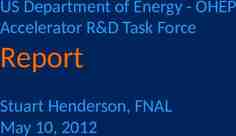The Bureau of Land Management Environmental Management System (EMS)
18 Slides6.94 MB
The Bureau of Land Management Environmental Management System (EMS) Awareness Training Washington, DC February 2015
Reducing Our Footprint
Reducing Our Footprint
The BLM’s Annual Footprint In BLM alone, we use: o4,694 Vehicles. o3.5 million Gallons of fuel (non travel). o933 Buildings – 5.4 million square feet. o82,000 Megawatt hours of electricity. o3,780 Metric tns or 7.7 million pounds of waste. o170,000 Metric tons of CO2 (equivalent) air emissions (fuel & electricity use, Helium Plant). [ The amount of carbon sequestered by more than 4 million tree seedlings grown for 10 years.]
So, How Can We Reduce Our Footprint ? The Department’s Environmental and Sustainability Policy identifies the Environmental Management System (or EMS) as the planning and implementation framework for our environmental and sustainability programs. Secretary Salazar signed the Policy in 2011. It is the guiding environmental principle for each Department and Bureau employee. To implement the policy, the Department established a Sustainability Council as its governing body for the EMS. To read the policy statement, please visit: https://portal.doi.net/programs/ems/Documents/Salazar sustainability Memo 2011.pdf
EMS Approach The EMS is a way to address the significant impacts of our activities on the environment and make improvements. Some of these activities include : Energy Use Air Emissions Solid Waste Water Use Procurement Generation
A Business Approach for a Cleaner, Healthier Environment EMS is used in businesses and government -- from cities and states to the entire Federal Governmen t. All the BLM offices are integrated into the EMS through their respective states or centers. EMS includes measurable environmen tal goals, objectives, and targets that are reviewed and updated annually. Environmen tal consideratio ns or requirement s are integrated into day-today practices and overall operations.
The BLM Joins Interior in Implementing EMS to: Strengthen commitments to protect and reclaim public lands. Comply with federal, state, local & tribal laws, regs. & policies. Reduce the environmental impact of its operations. Continuously improve its environmental performance. Prevent pollution and waste.
This is the Basic EMS Framework The International Organization for Standardization’s EMS framework (ISO 14001) is the basis for the BLM EMS. 1
EMS Significant Aspects BLM analyzes its environmental impact to determine the “Significant Aspects” of its operations that affect the environment. ASPECT: An element of an organization’s activities, products, or services that can interact with the environment. THE CAUSE. IMPACT: Any change to the environment, whether adverse or beneficial, wholly or partly resulting from an organization’s activities, products, or services. THE EFFECT.
Examples of Aspects and Impacts ACTIVITY ASPECT POTENTIAL IMPACT Fleet Vehicle use Energy Use Air Emissions Degraded air quality Resource depletion Purchasing Goods Green Procurement Conserved resources Pollution prevention Building Operation Water Use Resource depletion Air Emissions Degraded air quality Resource depletion Electricity Use All BLM personnel should be familiar with both the significant aspects and actual or potential impacts associated with their work.
EMS Objectives and Targets o Once Significant Aspects are determined, Objectives and Targets are set that are specific, measurable goals to address the significant aspects. o The BLM’s EMS is Bureau-wide in scope to address the BLM’s sustainability goals. Your State or Center may have additional targets and objectives.
2015 BLM EMS Objectives and Targets As pe c t Ene r gy Use Ene r gy Use Ene r gy Use Air Emissions W ate r Use Gr e e n Pr oc ur e me nt 2 0 1 5 EMS O b j e c t ive s S us t ainab le Build ings - Build ings ove r 5 0 0 0 s q f e e t c onf or m t o Guid ing Pr inc iple s . Pe t r ole um in Fle e t - De c r e as e pe t r ole um us e in fl e e t vs 2 0 12 us e . Alt e r nat ive Fue l f or Fle e t - I nc r e as e use of alt e r nat ive f ue l us e d f or fl e e t . S c ope 1 & 2 Gr e e nh ous e Gas Em is s ions - De c r e as e e mis s ions vs 2 0 0 8 b as e line . Pot ab le W at e r Us e - De c r e as e potab le wat e r us e int e ns it y vs 2 0 0 7 b as e line . Gr e e n Pr oc ur e m e nt - Re vie we d c ont r ac t ac t ions ar e c ompliant wit h s us t ainab le ac quis ition r e quir e me nt s . S olid Was t e Ge ne r at ion S olid W as t e - Dive r t s olid was t e f r om d is pos al. 2 0 1 5 T ARGET 15 % of b uild ings c onf or m 2 5 % r e d uc t ion in us e 2 % of t ot al f ue l us e d pr ogr e s s t o 2 0 % d e c r e as e by 2020 pr ogr e s s t o 2 6 % d e c r e as e by 2020 9 5 % of c ont r ac t s c omply 5 0 % of was t e s d ive r t e d
How You Can Help YOU are essential to the EMS success. You can participate by: Understanding your State/Center EMS Objectives and Targets and how your job fits into them. Knowing how your job affects the environment. Identifying any operational controls established for your job. Taking steps to lessen your environmental impacts! Educating others on what you have learned.
State and Center EMS Contacts Alaska – Lee Piper, [email protected] New Mexico – David Wallace, [email protected] Arizona –Eric Zielske, [email protected] Oregon/Washington – Pat Russell, [email protected] California – Michael Anson, Utah – Ron Rodrigue, [email protected] [email protected] Colorado – Bruce Rittenhouse, Wyoming – Ken Henke, [email protected] [email protected] Eastern States – To Be Determined NIFC – John Owens, Idaho – Marsha Buchanan, NOC – Greg Balen, [email protected] [email protected] [email protected] Montana/Dakotas – Barb Riveland, NTC – Kimberly Menning, [email protected] [email protected] Nevada – Gary Birge, [email protected] Washington Office – Kim Harriz, [email protected] Training Additional EMS Awareness specific to your state and/or center is available from your EMS coordinator.
To Remember It is important that all BLM employees comply with environmental policy and procedures established for his/her office. This includes the Requirements of EMS Get to know the Significant Aspects and Impacts of Your Actions.
Additional Information For additional information, visit the BLM’s page on the Sustainability Sharepoint site: https://portal.doi.net/programs/ems/BLM/default.aspx Executive Order 13514 http://www.fedcenter.gov/programs/eo13514/ DOI EMS Policy Statement https://portal.doi.net/programs/ems/Documents/ Salazar sustainability Memo 2011.pdf WO EMS Instructional Memorandum http://www.blm.gov/wo/st/en/info/regulations/ Instruction Memos and Bulletins/national instruction/2015/IM 2014XXX.html ISO 14001 EMS Standard https://portal.doi.net/programs/ems/BLM/blm new group docs/ iso 14001 2004.pdf
Now and Future Generations We all have a responsibility and a role to play in implementing EMS to ensure economic, environmental, and national security, and to protect America's precious resources for generations to come.























